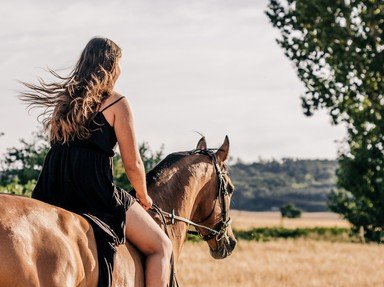Quiz Answer Key and Fun Facts
1. What is the back part of the seat of an English saddle called?
2. What part of the saddle does the rider rest their feet in?
3. What is the piece of tack that attaches to the saddle to hold it in place on the horse?
4. What part of the saddle must be measured to find the right size for the horse?
5. What is the part of the bridle that sits on the top of a horse's head behind the ears?
6. Snaffle, pelham, slow twist, full cheek, Dr. Bristol, and gag are a few types of what part of a bridle?
7. Which of these is a type of noseband?
8. What two parts of the bridle attach to the bit?
9. What is the piece of tack called that attches to the D-rings of the saddle and the girth that helps keep the saddle from sliding too far back on the horse?
10. Bits are made of several different materials. This enables a rider to give their horse alternatives if they particularly dislike a certain one. Three of the following materials are used to make bits. Which material is NOT used?
Source: Author
Dianak01
This quiz was reviewed by FunTrivia editor
Tizzabelle before going online.
Any errors found in FunTrivia content are routinely corrected through our feedback system.


